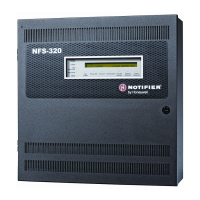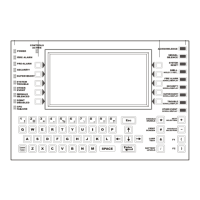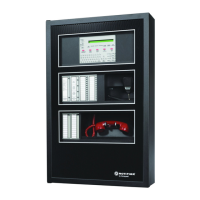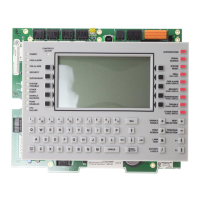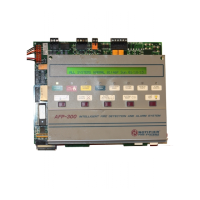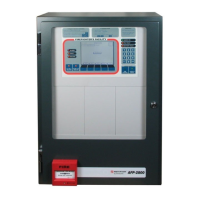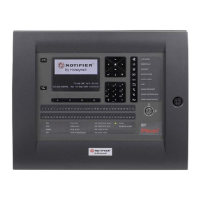Battery Checks and Maintenance Section 5 Testing the System
NFS-3030 Installation PN 51330:C 10/28/2003 61
Remove AC power, activate an Initiating Device Circuit through an alarm initiating device or an
addressable initiating device on the SLC, and check that programmed active notification appliances
sound, and alarm indicators illuminate. Measure the battery voltage with notification appliances
active. Replace any battery with a terminal voltage less than 21.6 VDC and reapply AC Power.
Note: The battery test requires fully charged batteries. If batteries are new or discharged due to a
recent power outage, allow the batteries to charge for 48 hours before testing.
Return all circuits to their pretest condition.
Check that all status LEDs are off and the green POWER LED is on.
Notify fire, central station and/or building personnel when you finish testing the system.
5.4 Battery Checks and Maintenance
Maintenance-free sealed lead-acid batteries used in the system do not require the addition of water or
electrolyte. These batteries are charged and maintained in a fully charged state by the main power
supply's float charger during normal system operation. A discharged battery typically charges at
1.5–1.8 A and reaches the float voltage of 27.6 VDC within 48 hours.
Follow the local AHJ and manufacturer recommendations for battery replacement intervals. Minimal
replacement battery capacity appears on the control panel marking label. Immediately replace a leaking
or damaged battery. You can get replacement batteries from the manufacturer.
• If a battery leaks and contact is made with the Sulfuric Acid, immediately flush skin and/or eyes
with water for at least 15 minutes. Water and household baking soda provides a good
neutralizing solution for Sulfuric Acid.
• If Sulfuric Acid gets into eyes, seek immediate medical attention.
• Ensure proper handling of the battery to prevent short circuits.
• Take care to avoid accidental shorting of the leads from uninsulated work benches, tools,
bracelets, rings, and coins.
-meas
.c
r
SLC Out
SLC Return
SLC Return
SLC Out
STEP 2
STEP 3
Step 1 Disconnect the SLC channel B (Out) and SLC channel A (Return) at the control panel.
Step 2 Measure and record the resistance at SLC Out.
Step 3 Measure and record the resistance at SLC Return.
The minimum resistance is the lesser of two and three.
Figure 44 Measuring DC resistance on an unpopulated SLC Loop
!
WARNING: Batteries contain Sulfuric Acid which can cause severe burns to the skin and eyes
and damage to fabrics.
!
CAUTION: Shorting the battery leads can damage the battery, equipment, and could cause
injury to personnel.

